Find out if a tiny ligament in your neck could be the root cause of your problems.
It started as a dull ache and now has progressed. It feels like a knife in the back of your neck and is preventing you from daily activities. Medications, rest and conservative treatments have failed. Your doctor noticed on x-ray that the bones are out of alignment. He thinks you may have suffered a ligament injury. What is a ligament? What is the function of ligaments in the spine? What are the 5 main ligaments of the spine? Are there different types of ligament injuries? What can happen if spinal ligaments are injured? Can ligaments heal on their own? What are the treatment options for ligaments of the spine injuries? Let’s dig in.
What Is a Ligament?
A ligament a thick piece of connective tissue that connects bone to bone. Think of it as duct tape that holds bones together.
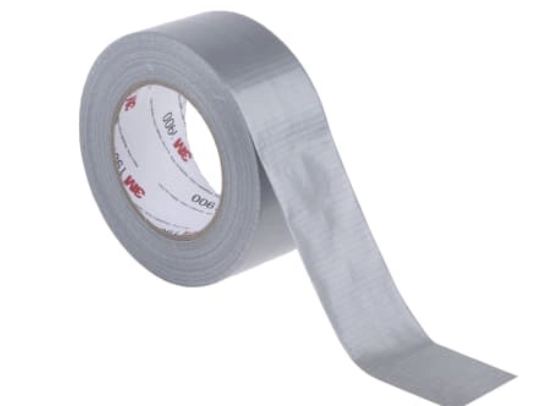
What Is the Function of Ligaments in the Spine?
Ligaments function to stabilizes the Spine, hold the Vertebral bodies together, limit Spinal motion and protect the discs.
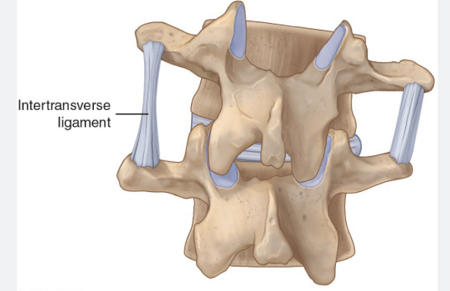
What Are the 5 Main Ligaments of the Spine?
Review of basic spinal anatomy will help you better appreciate the major ligaments of the spine and their location. In this post, I will be discussing the cervical spine: AKA the neck. All the ligaments discussed below are in the cervical spine but actually run the length of the spine into the sacrum.
The spine is composed of boney building blocks that stack on upon another. These are called vertebral bodies. In the cervical spine there are 7 boney building blocks which are numbered from 1 to 7. They are preceded by the letter ‘C’ which refers to ‘cervical.’ Sandwiched between each of the building blocks is a spongy shock absorber called a disc. At each level of the spine, nerves exit through a boney doorway called the neuroforamen.
There are a large number of both large and small ligaments in the spine. The 5 main ligaments of the spine include:

Anterior Longitudinal Ligament (ALL)
A one-inch thin ligament that is located on the front of the spine. It starts at the base of the skull and extends into pelvis.
Posterior Longitudinal Ligament (PLL)
A one-inch thin ligament that is located on the backside of the boney building blocks of the spine (vertebral bodies). Like the ALL, the PLL starts at the base of the skull and extends into the pelvis.
Supraspinous Ligament
On the backside of the spine is a projecting bone that is easily felt. It is present at each level and is located in the midline. If you run your hand down someone’s neck, these pointed bones are easily identified. These are the spinous processes. The supraspinous ligament connects each of the spinous processes from C7 down to L4.
Interspinous Ligament
Like the supraspinous ligament, the interspinous ligament connects each of the spinous processes of the spine. It is slightly deeper than supraspinous ligament. Its most superficial fibers connect with the supraspinous ligament whereas the deeper fibers connect with the ligamentum flavum. Conceptually, it is sandwiched between the supraspinous ligament and the ligamentum flavum
Ligamentum Flavum
The ligamentum flavum is a thick ligament that connects the spinal bodies together. Specifically, it connects the lamina two adjacent vertebral bodies. It is sandwiched between the interspinous ligament and the dura. It starts in the C2 bone and extends down into the pelvis. It is an important landmark for anesthesiologists when advancing their needle for epidural injections. The ligamentum flavum is thick and there can be significant change in the needle pressure when advancing into the ligamentum flavum. The technique is called Loss of Resistance (LOR). The ligamentum flavum can increase in thickness causing narrowing of the spinal canal, a condition known as spinal stenosis.
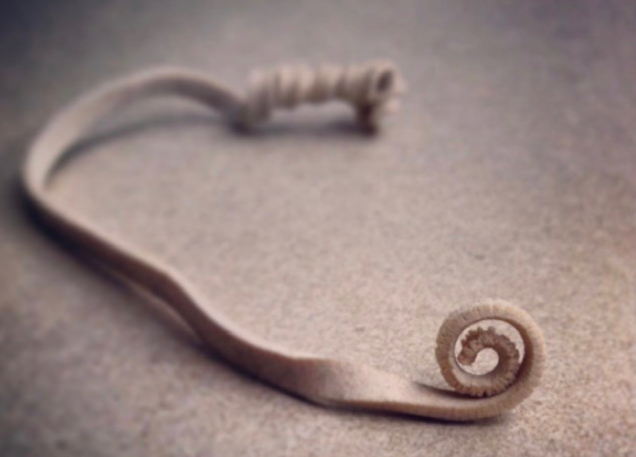
Can You Tear or Injure Ligaments in the Spine?
Ligaments in the spine are susceptible to injury. Motor vehicle accidents, sports injuries, other traumatic events, and repetitive motion over time are the most frequent causes of ligament injury.
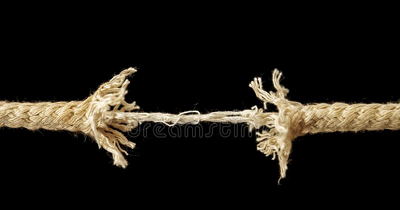
Are There Different Types of Ligament Injuries?
Absolutely! Various types of trauma including motor vehicle accidents that can cause ligament injury. These injuries are classified into three grades.
Grade 1 sprain: Mild and includes slight stretching of the fibers and partial tear of the ligament.
Grade 2 sprain: More severe and involves a full thickness partial tear but the ligament is still intact.
Grade 3 sprain: Most severe and involves the entire ligament. The two edges of the ligament are pulled apart. This is otherwise known as a rupture.
What Happens if the Ligaments in the Spine Are Injured?
Spinal ligaments provide important stability, limit motion, and protect the spinal discs. Injury to spinal ligaments is graded based upon the severity of the ligament injury. Injury of spinal ligaments can cause any of the following:
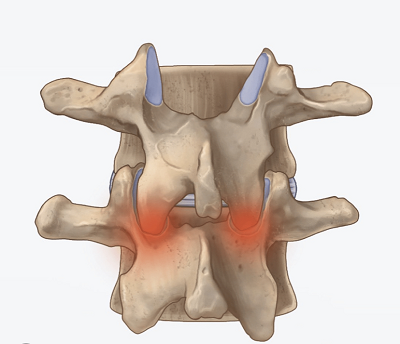
Spinal Instability: The spinal bones stack one upon another. They are supported by spinal ligaments. Injury to these ligaments can cause one or more of the vertebral bodies (boney building blocks) to move. This is referred to as listhesis. If the bone is moved forward in relation to the adjacent bone, it is called anterolisthesis. Conversely, if the bone is moved backwards in relation to the adjacent bone, it is called retrolisthesis.
Disc Injury: Movement of the vertebral bodies creates a shearing force on the disc. This force can lead to disc irritation, injury and degeneration. In addition, the loss of support provided by the ligament can cause disc protrusions or herniations.
Nerve Injury: Movement of one or more vertebral bodies can also irritate exiting nerve roots causing radiating extremity pain, numbness and tingling.
Spinal Stenosis: Movement of one or more vertebral bodies can narrow the spinal canal.
Facet Injury: Ligament instability in the spine can lead to facet overload, irritation, and injury which in turn can result in debilitating pain.
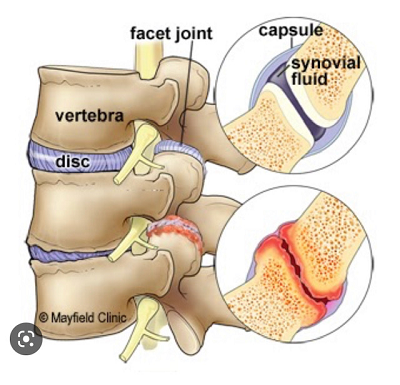
Does an MRI Show Ligament & Soft Tissue Injury?
Even with these multi million dollar MRI systems, we still don’t have precise technology to show small intersegmental injuries. Current MRI’s are more effective at evaluating injuries to soft tissue supporting the spine. Common findings include blood or swelling (hematoma) just adjacent to the injuries.
Can Ligaments of the Spine Heal?
Healing is dependent upon the severity of the injury. Ligament healing is an extensive 3 phase process that takes months. If a given ligament is allowed sufficient time to heal and is supported during the healing phase many Grade 1 injuries can heal. The problem with spinal ligament injuries is twofold:
Patients rarely allow sufficient time to heal which requires significant activity modification for months.
External bracing is not a practical option. Unlike a knee or ankle ligament injury where a knee or ankle brace can be applied, external spinal braces are rarely used and poorly tolerated by most patients.
Non Invasive Treatment Options for Ligaments of the Spine Injuries
At ATL Pain Institute, spinal stability & healthy ligaments are a central part of our philosophy and treatment protocols. We are like non invasive orthopedics, with a focus on regenerative healing on a cellular level. We view the spine as a collection of many intricatal parts that are working in harmony to create excellent health. We look at the bio mechanics & alignment of the spine, as a key component to a properly functioning nervous system. It’s also an important part to optimal healing. Our doctors have pioneered the use of this world class technology to pinpoint where the true source of pain is coming from. In fact, our spine injury experts will be able to determine in just minutes, if you’re a candidate for this groundbreaking therapy. Remember, it’s a same day procedure with little to no down time & patients usually experience immediate results. This device, the Orthogold, also has a class 2 clearance for the activation of connective tissue that are the essential matrix to rebuilding healthy ligaments, which are the support structure that hold are important vertebrae together in our spine. We also have multiple studies that document this device helps accelerate your body’s natural healing ability without drugs, needles or surgery.
If you or a loved one has sustained trauma to the spine and has not responded to conservative therapy, schedule a consultation with one of our soft tissue specialists. Injury of the ligaments of the spine are quite common and often times missed at your emergency room visit. 33% of people are still living with moderate to severe symptoms even 2 years after their whiplash injuries. Our doctors at ATL PAIN INSTITUTE are leading the way toward improving spinal instability, and injury to the spinal discs, facets and nerves. Stop the suffering and start the process of healing from within. We are open Monday through Saturday. Find out if living without pain is right for you 770 ATL PAIN or 770-285-7246.
We have the technology to rebuild you!
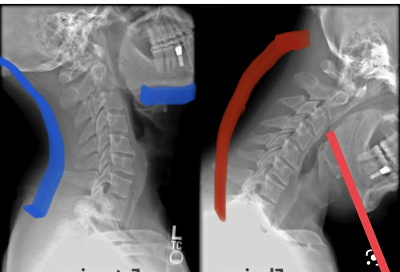
To your health,
Dr. Matthew DiDuro, DC
